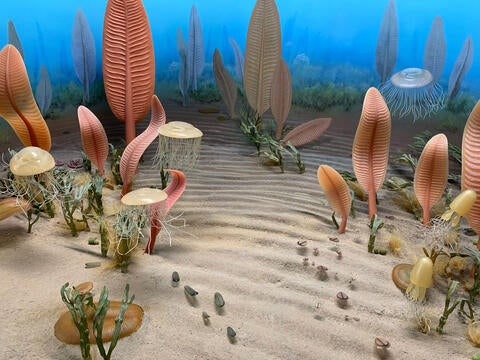遺伝子と言語の複雑な歴史を探る世界的なデータベース A global database helps explore the complex history of our genes and languages
2022-11-21 マックス・プランク研究所
研究チームが、言語データと遺伝子データを結びつける世界的データベース「GeLaTo」を構築した。その結果、多くの一致が見られたが、広範囲で体系的なミスマッチも発見された。
このプロジェクトは、GeLaTo(GEnes and LAnguages TOgether)(イタリア語でアイスクリームの意)というおいしい名前のデータベースを作り、ゲノムと言語データを組み合わせて言語のグローバルな進化を研究するものである。この新しい研究で、研究者達は、集団の言語史と遺伝史がどの程度一致しているかを調べ、定量化しました。
今回初めて、遺伝子と言語のミスマッチ、つまり生物学的パターンと言語学的パターンが異なるケースに注目した。
研究者たちのデータベースでは、遺伝子と言語の関係のおよそ5分の1がミスマッチであり、それらは世界中で発生している。
ミスマッチの多くは、集団が遺伝的に異なる近隣の集団の言語に移行することによって生じる。隣国と遺伝的に同化しているにもかかわらず、独自の言語的アイデンティティを維持する人々のケースは稀であるが、同様に発生する。
GeLaToには、約300の言語を話す4000人以上の遺伝情報が含まれています。この世界的なデータベースには、人口統計学的な歴史と言語学的な歴史を切り離すのに十分な情報が含まれている。
<関連情報>
- https://www.mpg.de/19524042/1121-evan-genes-and-tongues-not-always-together-150495-x
- https://www.pnas.org/doi/10.1073/pnas.2122084119
人類の遺伝史と言語史のマッチングとミスマッチのグローバルな分析 A global analysis of matches and mismatches between human genetic and linguistic histories
Chiara Barbieri , Damián E. Blasi , Epifanía Arango-Isaza , Alexandros G. Sotiropoulos , Harald Hammarström , Søren Wichmann , Simon J. Greenhill , Russell D. Gray , Robert Forkel , Balthasar Bickel , and Kentaro K. Shimizu
Proceedings of the National Academy of Sciences Published:November 21, 2022
DOI:https://doi.org/10.1073/pnas.2122084119

Significance
There has been considerable debate about the extent to which our biological and linguistic histories match to each other, supported by examples of both matches and mismatches. We introduce a genomic database (GeLaTo, or Genes and Languages Together) to quantify matches and mismatches worldwide. While in most populations genetic and linguistic relations match, mismatches occur regularly as a result of language shift, and several language families follow diversification patterns different from that of the genomes. These findings reveal features of population contact in human history that were previously inaccessible to observation. Our database opens avenues for disentangling demographic and linguistic history and for comparing biological and linguistic modes of evolution.
Abstract
Human history is written in both our genes and our languages. The extent to which our biological and linguistic histories are congruent has been the subject of considerable debate, with clear examples of both matches and mismatches. To disentangle the patterns of demographic and cultural transmission, we need a global systematic assessment of matches and mismatches. Here, we assemble a genomic database (GeLaTo, or Genes and Languages Together) specifically curated to investigate genetic and linguistic diversity worldwide. We find that most populations in GeLaTo that speak languages of the same language family (i.e., that descend from the same ancestor language) are also genetically highly similar. However, we also identify nearly 20% mismatches in populations genetically close to linguistically unrelated groups. These mismatches, which occur within the time depth of known linguistic relatedness up to about 10,000 y, are scattered around the world, suggesting that they are a regular outcome in human history. Most mismatches result from populations shifting to the language of a neighboring population that is genetically different because of independent demographic histories. In line with the regularity of such shifts, we find that only half of the language families in GeLaTo are genetically more cohesive than expected under spatial autocorrelations. Moreover, the genetic and linguistic divergence times of population pairs match only rarely, with Indo-European standing out as the family with most matches in our sample. Together, our database and findings pave the way for systematically disentangling demographic and cultural history and for quantifying processes of shifts in language and social identities on a global scale.


